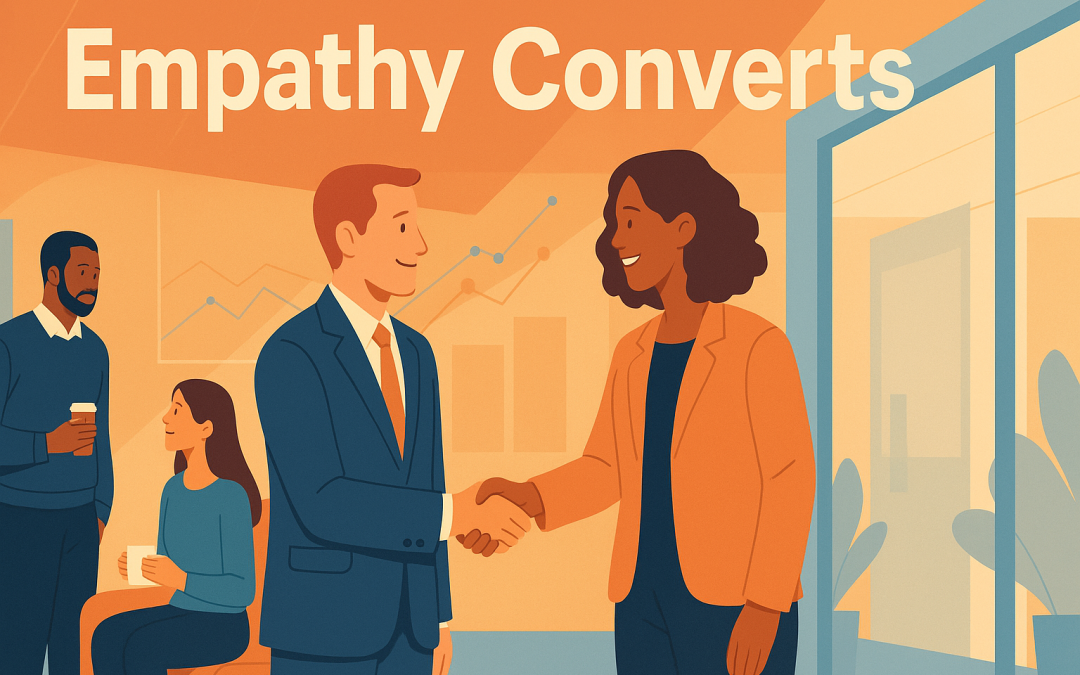The Expectation Gap
Customers have never been louder about what they want. Sixty-eight percent expect brands to show genuine empathy, yet only thirty-seven percent say companies actually deliver. Meanwhile, seventy-three percent of buyers rank overall experience alongside price and product quality when making purchase decisions. That gap is not a soft-skills issue, it is untapped revenue waiting for organizations that choose to listen first and sell second.
What Empathy Really Means in Marketing
Empathy is not a feel-good add-on. It is the disciplined practice of seeing the world through your audience’s eyes, then letting that understanding guide product design, messaging, and customer support. When a campaign “gets” people, friction drops, trust rises, and conversions follow almost as a reflex.
A Lesson From the Public and Nonprofit Sectors
I learned the power of empathy long before leading brands with seven-figure budgets. While working on public-sector PSAs and nonprofit fundraising appeals, I saw first-hand how audience trust had to be earned every single message. Voters, donors, and community stakeholders can smell self-interest a mile away; they give their attention only to organizations that demonstrate, “We understand your reality and share your stakes.” Those projects taught me that empathy is not charity work, it is credibility work. The question I hear from for-profit leaders is, “Does that same level of heart really move the needle when revenue is on the line?” The answer is yes. Markets may reward efficiency, but they remember humanity. A brand that solves problems while honoring people’s lived experiences enjoys loyalty competitors cannot buy with discounts alone.
The Business Case
- Higher loyalty and lifetime value. When customers feel understood, repeat purchases and referrals climb naturally.
- Price resilience. Brands that create emotional connection can hold or even raise prices without backlash because value is felt, not just calculated.
- Crisis insulation. Empathetic brands bounce back faster from mistakes because goodwill is already in the bank.
Proof in the Wild
- Google Pixel’s 2025 “Dream Job” spot focused on a father’s interview jitters, not camera specs, and became the most-searched brand during the Super Bowl.
- Clorox reframed bleach from germ killer to stress reliever with its “Start Clean” platform, earning national press and double-digit household-penetration gains.
Across industries, empathy-first messages outperform feature lists because they anchor utility in real human emotion.
How to Operationalize Empathy
- Listen everywhere. Mine call transcripts, social comments, and review sites for the exact phrases customers use.
- Map emotional touchpoints. Identify moments of anxiety, excitement, or frustration along the buyer journey, then design content or service fixes that meet that feeling in real time.
- Co-create stories. Invite real users into testimonials, behind-the-scenes videos, or beta groups so the brand voice stays grounded.
- Humanize tone. Write like a person, not a proposal. Favor clarity over cleverness, “you” over “we,” and active voice over buzzwords.
- Train cross-functional teams. Marketing may spark empathy, but product, sales, and support must carry it through every interaction.
Measuring the Payoff
- Repeat-purchase rate and average order value show whether empathy turns transactions into relationships.
- Net Promoter Score and social-sentiment trends reveal whether people feel heard.
- Content dwell time and share of positive voice indicate if stories are resonating, not just reaching.
The Takeaway
Empathy is strategic, not sentimental. It converts ads into advocacy and first sales into lifelong partnerships. In a crowded marketplace, the simplest way to stand out is to remember there is a human heartbeat on the other side of every click, then prove it at every touchpoint.
